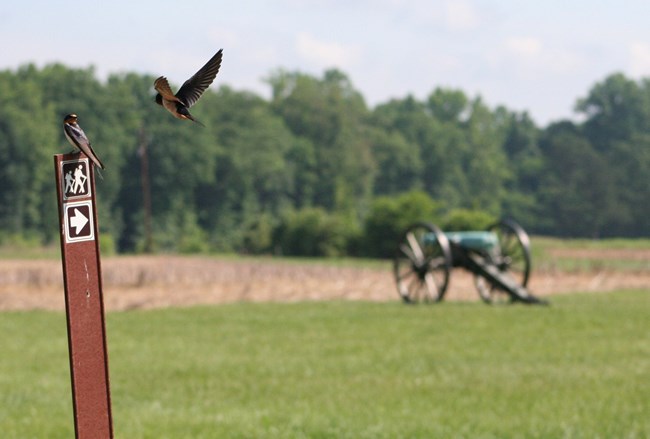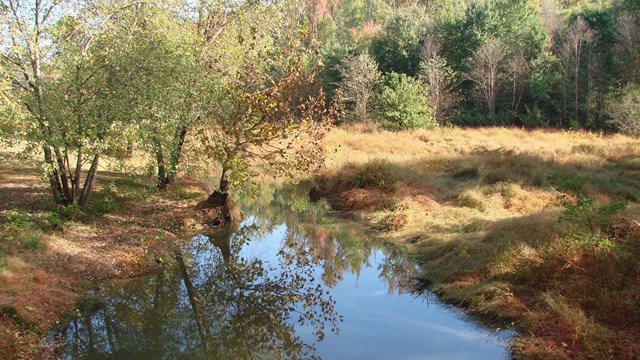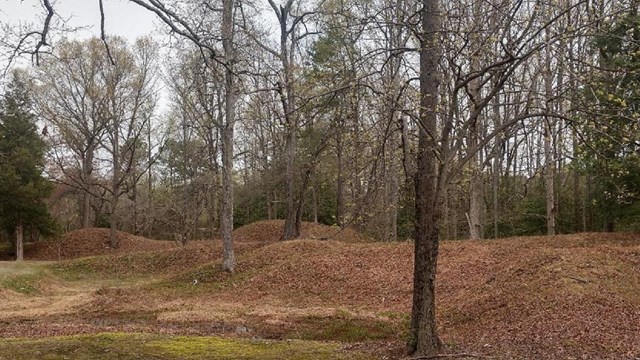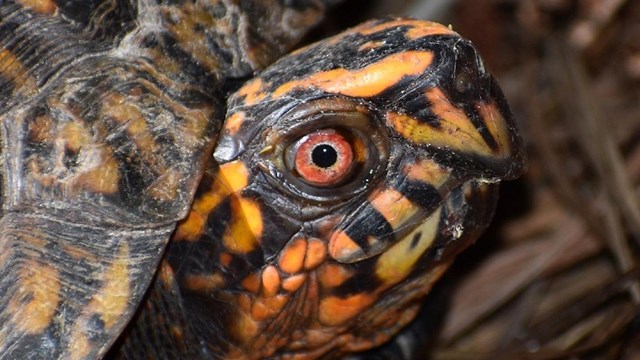
NPS Photo. Much of the park's land was historically cleared for agriculture. In order to maintain portions of this cultural landscape as they would have appeared during the Civil War, the park has kept certain areas open and free of trees. This has created a variety of successional stages and community types throughout the park, ranging from field to old-growth forest, creating habitat for a wide variety of birds, mammals, reptiles and amphibians. The park is made up of forest habitat, transitioning from mixed hardwood to pine or mixed oak communities, managed fields, and about 100 acres of leased agriculture.
The park also contains about 15 miles of rivers and streams and over 400 acres of riparian wetland. Although the majority of the park's wetlands are forested, several areas (Malvern Hill, Gaines' Mill and Beaver Dam Creek) have opened up, most likely due to beaver activity, creating not only stunning scenic views but wonderful habitat for fish, turtles and water birds, such as herons and egrets.

Natural Features and Ecosystems
Learn about the makeup of the park, which includes diverse areas of forest, meadows, streams and wetlands. 
Environmental Management
This section has information about how the park manages threats to natural and cultural resources. 
Natural Resource Monitoring
Scientists from the Mid-Atlantic Network monitor the status and long-term trends of natural resources at the park. |
Last updated: July 21, 2021


